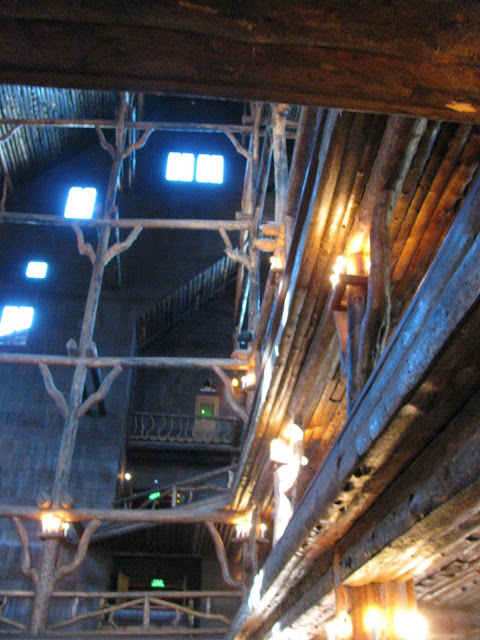Our first night in Yellowstone was spent in Grant campground. We arrived just before the office closed and we arrived about the same time as 25 other campers. People kept on coming. Our site, like all the rest had no electricity but the moon was close to full and we needed to stop. We drove around to the site to which we were directed. We had a slight hesitation as to where the site was ours according to the numbers, but finally backed into what we decided was #27.
We set up and were just about asleep when lights shone through our windows from a van. Jeff peeks out the window and says, “Uh oh, we may be in the wrong site.” About that time there was a knock on our door. After a discussion with a stranger through the window while frantically getting dressed enough to go outside to figure things out, The nice man who was driving a van about the size of ours checked out the site we were in (his) and the other site (ours) then came back to our window and said, “No problem. . .” he would just take our site. Like us, he was just sleeping there for the night. We were very thankful and sorry for causing the problem.
Now, back to sleep.
Between the full moon and general restlessness, neither of us slept very well. Because we had no electricity, we opened the window to cool down the RV. As the temperature dropped through the night, we closed the windows, forgetting one so that by morning when the windshield and building roofs frosted, it was close to frosting on our faces.
Not only the cold, but also strange sounds kept me awake. What I later learned was a rutting elk buck bugled throughout the night.
If you have never heard an elk bugle, then you have really missed a great sound.
I didn’t know what the sound was until the next morning when we drove up on a couple elk does in some brush along the road beside a thermal spring. Like all good tourists, we stopped the car to take some pictures.
He decided to get out of the car to get a better shot. I wouldn’t dare, being the chicken that I am. Once Jeff was out of the car, clicking away, the Elk buck started that strange bugleling noise. Then it noticed Jeff.
I reminded him of the warnings we had seen that said an elk would charge a person or a car. Jeff ran for the car. Once Jeff was back to the car, the elk quickly refocused his attention on the does.We traveled on.
I started this entry to tell you about how we slept while in Yellowstone Park so to that subject I will now return.
Old Faithful, a thermal gyser, is the star of Yellowstone. I will write more about this famous geyser in a later blog enry. Located beside Old Faithful is Old Faithful Inn built during the winter of 1903-1904. It is built out of pine logs cut down from nearby.
The inn stands four stories high ( about 65 feet to the ceiling from the ground floor) and all floors are visible from the ground floor lobby.
The lobby has a large stone fireplace fronted with nice wooden rocking chairs.
the 2nd floor which is called the mezzinine has rockers and wooden straight-back chairs around the balcony over looking the open lobby
. . .as it is on the dark red entrance door.
We had called a couple days before trying to get a room. Of course every lodge room in the park was booked.
We decided to ask if by chance they had any room available for the night. The clerk said that “as a matter of fact, I do.” We were stunned and decided to take it.
A gentleman sitting nearby in the lobby told us that he had just heard someone cancel their room right before we walked up to the desk.
We felt very lucky and even more so when another guest told me that she had booked her room two years ago.
Our room had no bathroom, but it did have a sink, queen size bed, a dresser and a view of a full moon over top the inn. We were told that we shared a bathroom and shower with another room, but in actuality we shared it with anyone who happened by the bathroom. It was interesting to walk down the hall to and from the shower while people in the lobby watched us from down the hall.
Residents of these rooms had to actually walk through the lobby to get to the showers.


























































